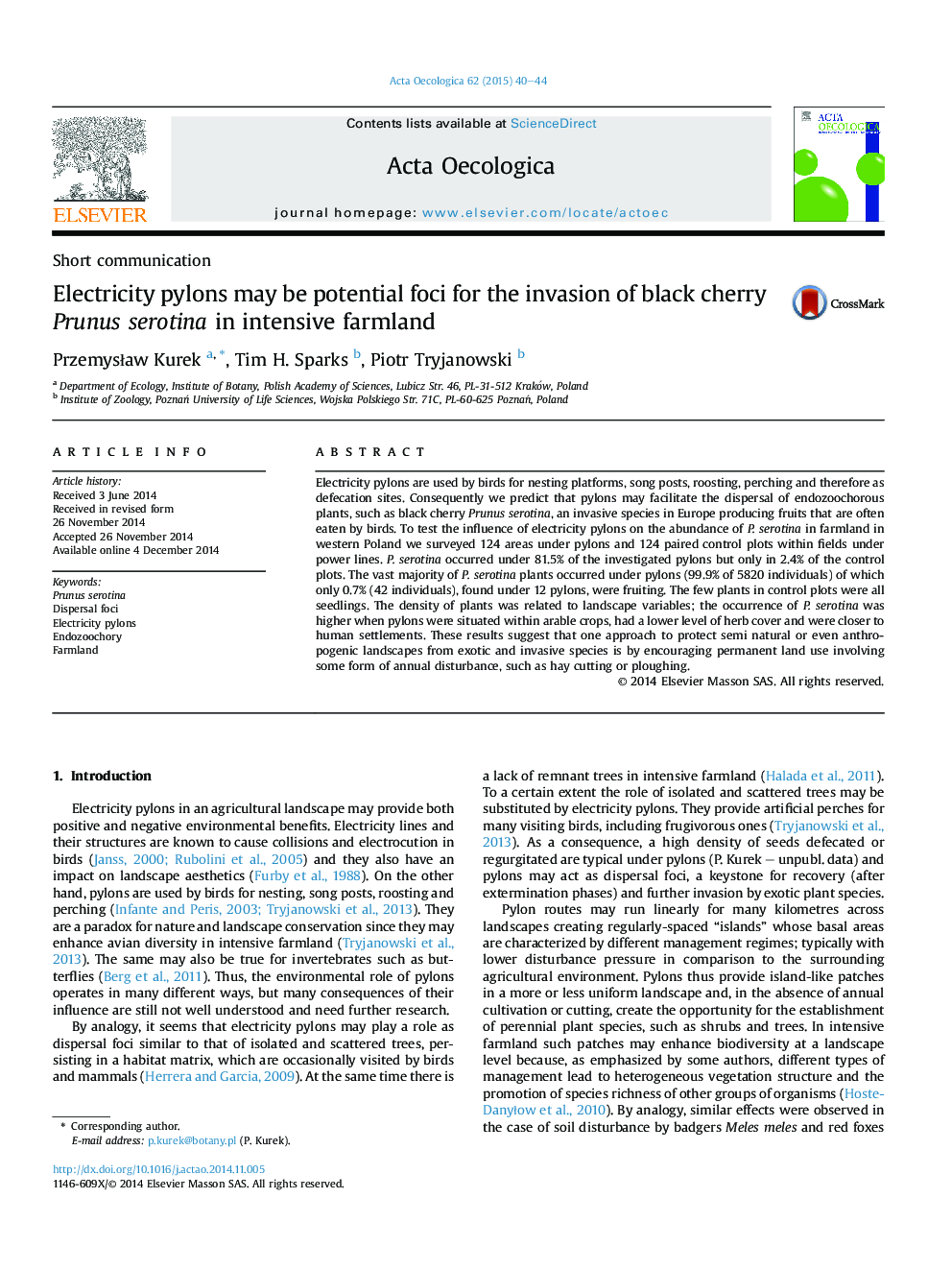| Article ID | Journal | Published Year | Pages | File Type |
|---|---|---|---|---|
| 4380725 | Acta Oecologica | 2015 | 5 Pages |
•Pylons may positively influence the abundance of invasive black cherry Prunus serotina.•P. serotina occurred almost exclusively under pylons in comparison to control plots.•In control areas P. serotina occurred only sporadically.•The density of P. serotina was higher under pylons which were located within arable crops.•The density of P. serotina was higher under pylons which had a lower herb cover and which were closer to human settlements.
Electricity pylons are used by birds for nesting platforms, song posts, roosting, perching and therefore as defecation sites. Consequently we predict that pylons may facilitate the dispersal of endozoochorous plants, such as black cherry Prunus serotina, an invasive species in Europe producing fruits that are often eaten by birds. To test the influence of electricity pylons on the abundance of P. serotina in farmland in western Poland we surveyed 124 areas under pylons and 124 paired control plots within fields under power lines. P. serotina occurred under 81.5% of the investigated pylons but only in 2.4% of the control plots. The vast majority of P. serotina plants occurred under pylons (99.9% of 5820 individuals) of which only 0.7% (42 individuals), found under 12 pylons, were fruiting. The few plants in control plots were all seedlings. The density of plants was related to landscape variables; the occurrence of P. serotina was higher when pylons were situated within arable crops, had a lower level of herb cover and were closer to human settlements. These results suggest that one approach to protect semi natural or even anthropogenic landscapes from exotic and invasive species is by encouraging permanent land use involving some form of annual disturbance, such as hay cutting or ploughing.
